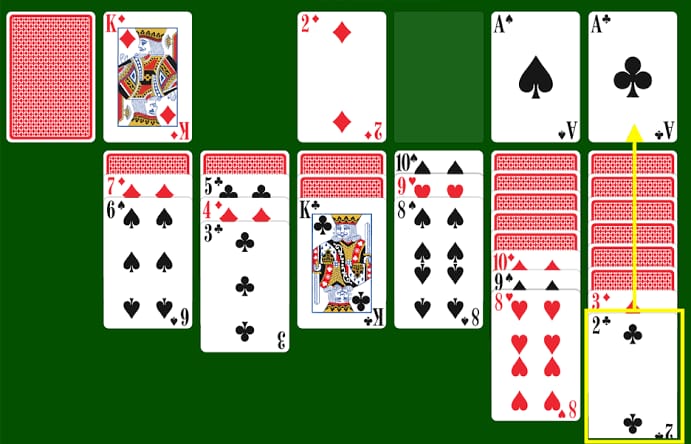One of the most traditional and basic card games ever created is patience. A surprising degree of depth in strategy is needed to consistently win games, but it may appear simple on the surface. Any Solitaire game always involves a certain amount of luck, even the ones with the best plans, which is one of the things that makes them so interesting. Your chances of winning the game will be increased thanks to this advice.
First, expose higher-density stacks
It’s always advised to pick columns with sizable stacks beneath their present face cards while you’re exposing hidden cards. The odds of finding valuable cards that you can utilise to build piles of revealed cards are always higher when you begin to whittle down these columns of hidden cards as soon as you can.
Keep a Spot Without a King Full!
Many players make the rookie mistake of emptying tableau spots or piles just to get rid of all the cards there. But since only kings can occupy those places, if you don’t have a King to put there, the space will just remain empty. Until you are fortunate enough to get a King from your other cards, this effectively cuts off an entire column of play.
When filling a space, never forget about colour
It’s a major decision whether to choose a red or black King to fill a vacant seat. For the remainder of the game, it determines the pile’s colour order. To ensure future stacking is simple, carefully analyse the Queen and Jack cards you have accessible.
First, reveal the top card from the deck.
Despite the fact that it sounds straightforward, many players make the error of starting to arrange their cards into piles and moving cards around the tableau before turning over the first concealed card from the upper deck like Texas Holdem poker. In fact, revealing this card should always be your initial move because it gives you an extra set of possibilities for creating foundation decks (the four slots at the top of the tableau) as well as piles beneath. In patience, having more options is usually preferable.
Build Ace Stacks Not Always
Moving cards to the top Ace foundations or stacks above the main tableau may seem contradictory, but if you require those cards to move your piles below, you may actually run into trouble. Always consider your options before creating your Ace stacks, as cards placed there cannot always be recovered and could lock you into a losing situation if you aren’t careful. Late in the game, this is extremely common.
Don’t move cards randomly
Although it can be tempting to shuffle cards from pile to pile and gradually build them up, doing so can frequently prevent you from winning. This is because valuable cards of various colours are often hidden below inferior cards. In general, you should only ever move cards to expose a concealed card or when doing so clearly benefits you. Don’t do anything merely to create piles.
Attempt the Ace or Two.
Play any Aces or Twos that are revealed from the stockpile rather than drawing further cards from it. One of the best manoeuvres in the game, according to many experts. The Aces can always be dealt with first, and the twos or deuces will probably follow shortly after.
Final Consideration
It’s not difficult to get better at patience. The game is simple to learn and play and has a limited number of rules. Take these suggestions to heart, though, and begin experimenting with daring tactics if you want to become very successful at it. Patience does involve a certain amount of luck, but you should still win a minimum of 4 out of 5 games if not more. When used, these 7 suggestions, techniques, and methods will undoubtedly enhance your patience play. To see how one tactic influences your gaming, it is best to test it out one at a time. Best of luck!
